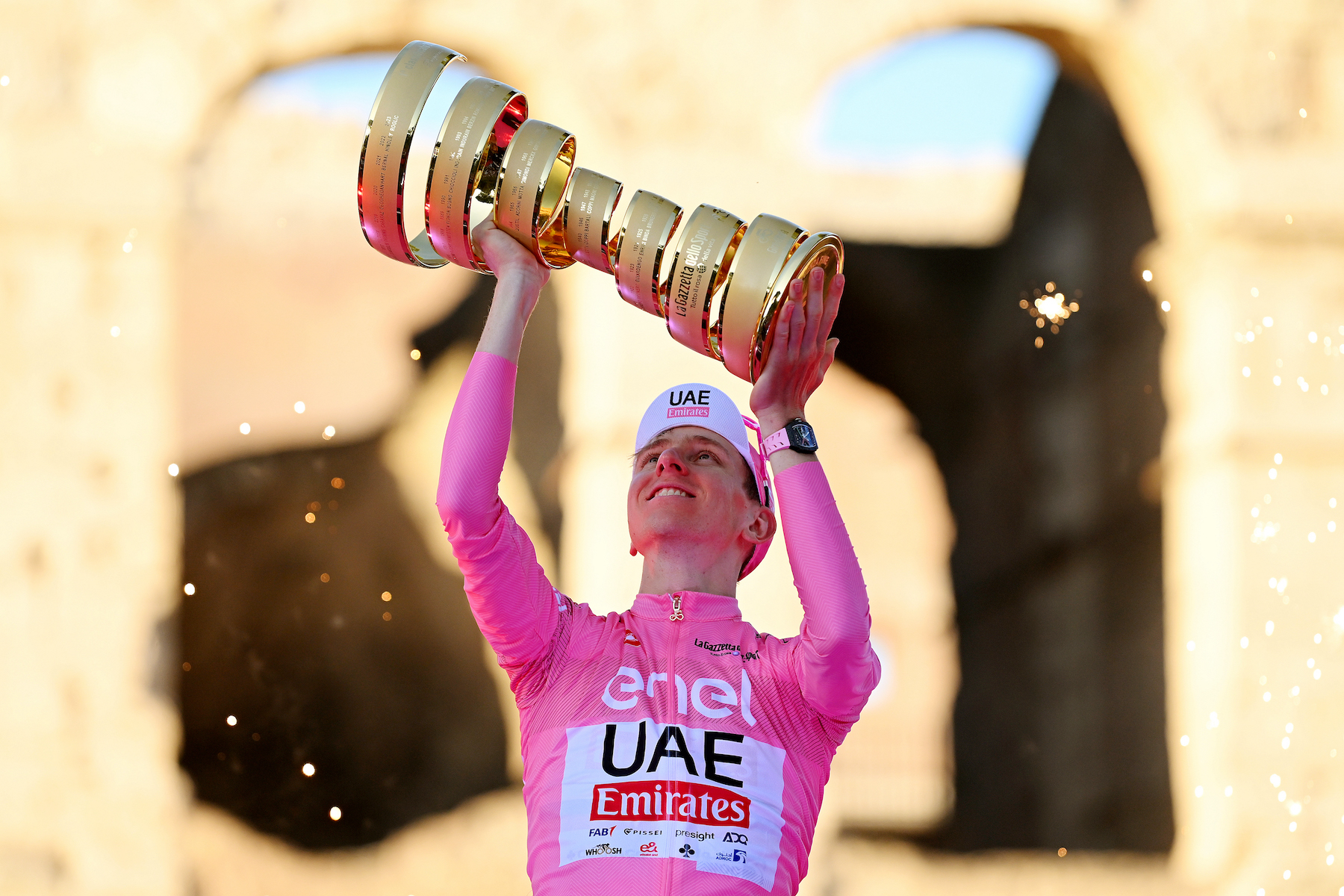
With a brace of time trials, gravelly nods to the Classics and a final week that is liable to turn the race on its head, this year's Giro d'Italia looks to be one not to miss.
As has already been announced, the Italian Grand Tour, which begins on May 9 and is the first of the season, features an Albanian Grande Partenza. It will spend three days in its eastern neighbour, with a 13.7km time trial sandwiched between two hilly stages.
Race highlights include stage nine into Siena, which features five sectors of sterrata, three classified climbs and a finish on the Muro di Santa and into the Piazza del Campo, mimicking the Strade Bianche.
That is followed the next day by a 28.6km time trial that will test riders again, and that finishes outside the iconic leaning tower of Pisa.
The mountains begin on stage seven – relatively late by Giro d'Italia standards – with a 12.6km climb to the finish at Tagliacozza at 1,425m altitude.
But the most serious action is saved for the final week, and in particular the climax of the GC battle on stages 19 and 20. Both days present the riders with around 5,000m to climb and finish on the French border, at Champoluc and the iconic Sestriere respectively.
There are also big days on the Monday, Tuesday and Wednesday, with a single flat stage in the middle of them all the only respite for the GC riders.
Talking of flat days, the 2025 Giro d'Italia has a potential six opportunities for the sprinters – three of those coming back to back as the race reenters Italy in the first week, and one on the very last day – a 141km Rome-Rome outing.
So far 2023 winner Primož Roglič (Red Bull-Bora-Hansgrohe) heads the list of major contenders. He will face Spanish talent Juan Ayuso (UAE Team Emirates), who will be riding his first Giro d'Italia and will be bringing his British team-mate Adam Yates along for the ride. Yates himself has only ridden the race once before, way back in 2017, when he was ninth.
Another debutant expected to signal his presence is Visma-Lease A Bike's Jonas Vingegaard. He would join team-mate Wout van Aert who has already signed up, and, unless Tadej Pogačar throws an unlikely last-minute hat into the ring, would almost certainly be regarded as the top favourite, just above Roglič.
Giro d'Italia 2025 Stage Table
Full route map
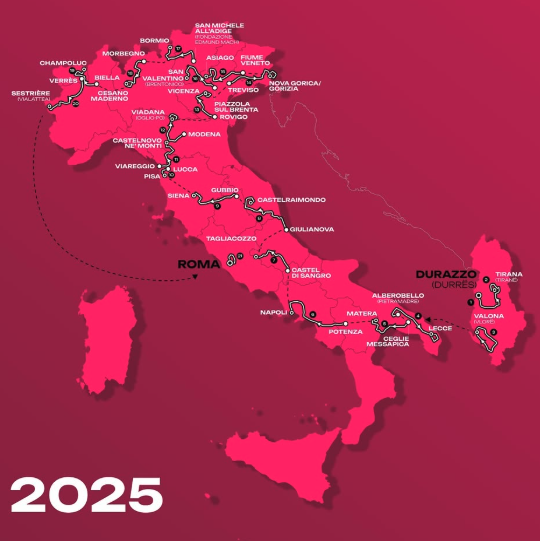
Stage by stage guide
Stage 1: Durrès > Tirana, 164km
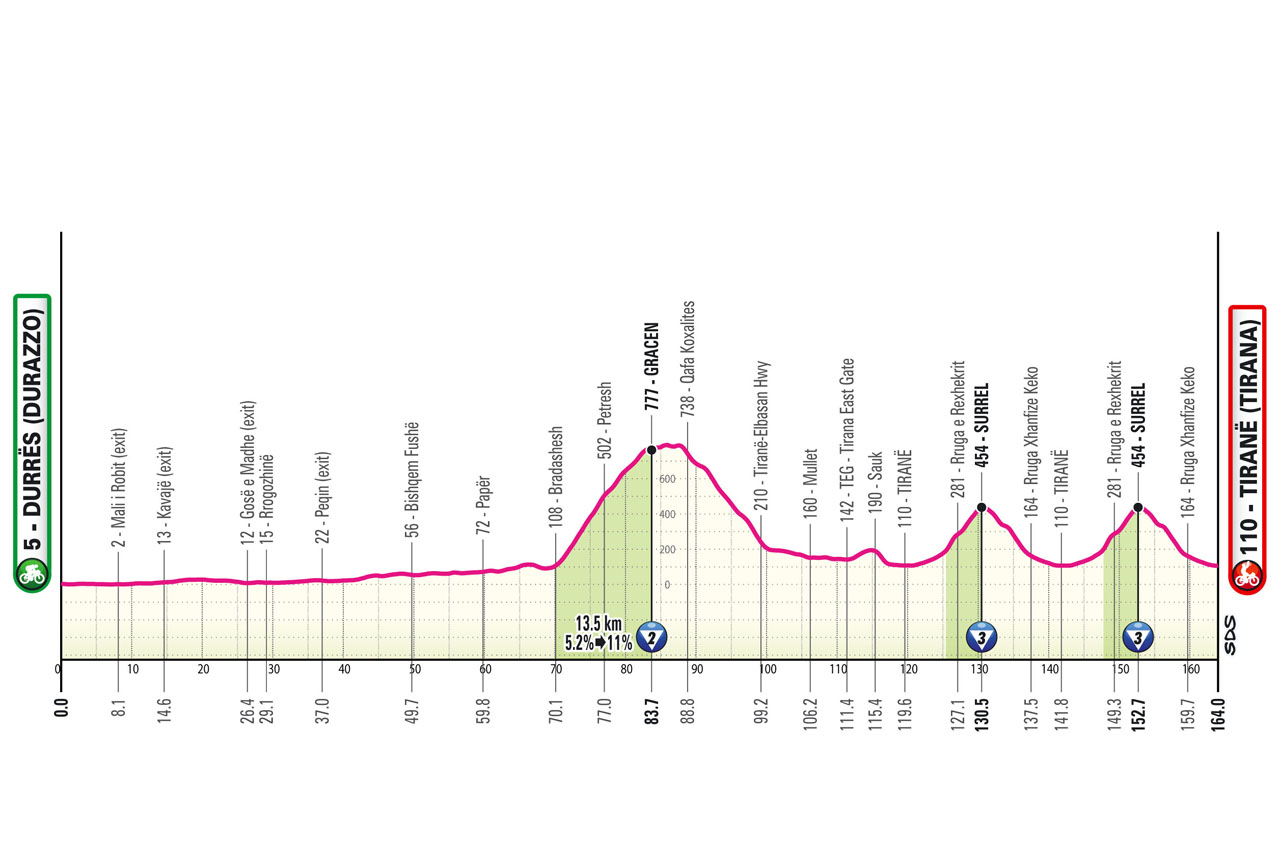
This opening stage certainly doesn't ease the riders in gently, with a sizeable second-category climb in the middle and twin third-cat peaks towards the finish. It heads inland from the city of Durrès, looping south then back up north to complete two laps of a 20km finishing circuit based on Tirana.
Stage 2: Tirana > Tirana, 13.7km (ITT)

This stage is as straightforward as they come – a relatively short race against the clock with only a single category-four lump in the middle as an extra test. Simple it may be, but it will create gaps between the GC favourites that will need to be closed down later on in the race, and an early pecking order of sorts will be established.
Stage 3: Valona > Valona, 160km
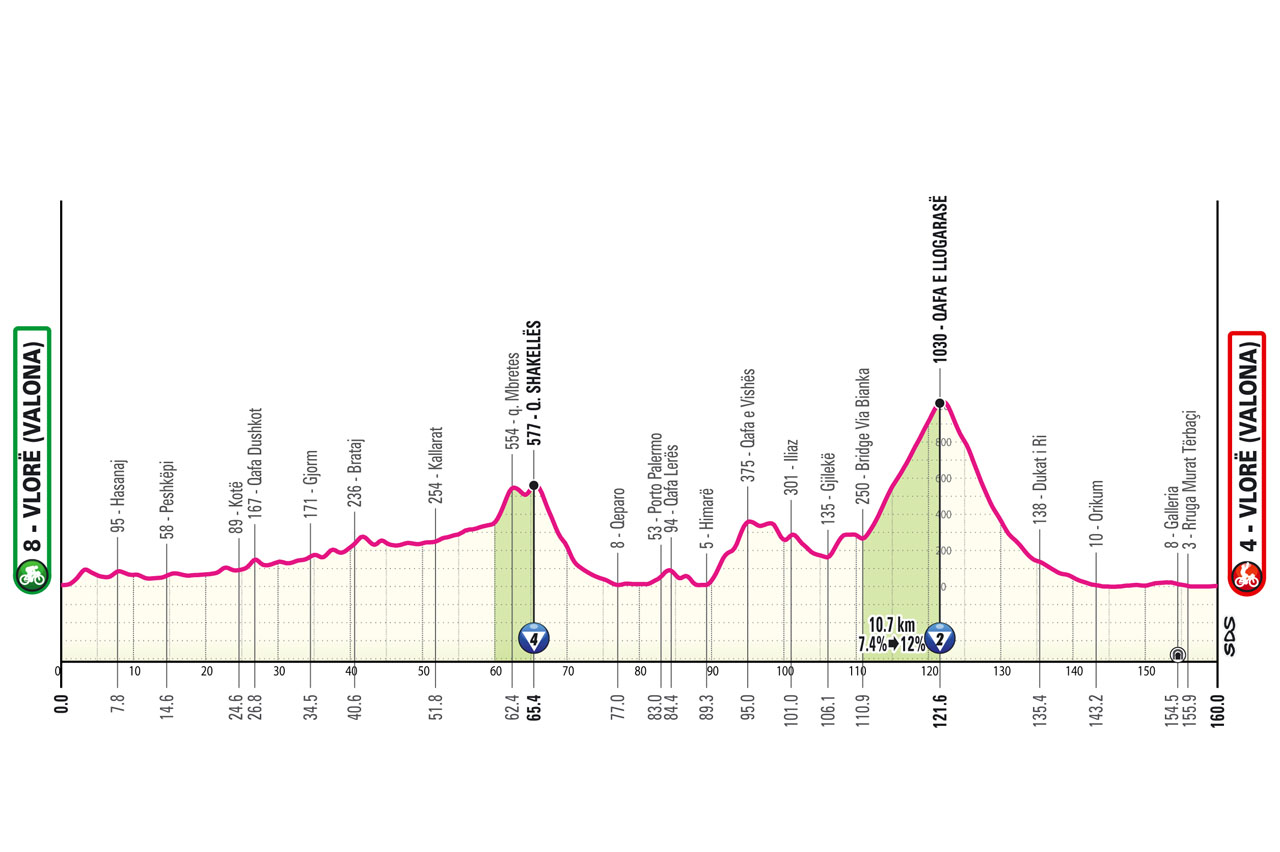
Today offers up the toughest terrain the riders will come across during their Albanian foray. An early cat-four is followed in the second half by a 10.7km cat-two climb at 7.4% average. Any breakaways will then have nearly 40km (mostly downhill and flat) to make the gap stick.
Stage 4: Alberobello > Lecce 187km
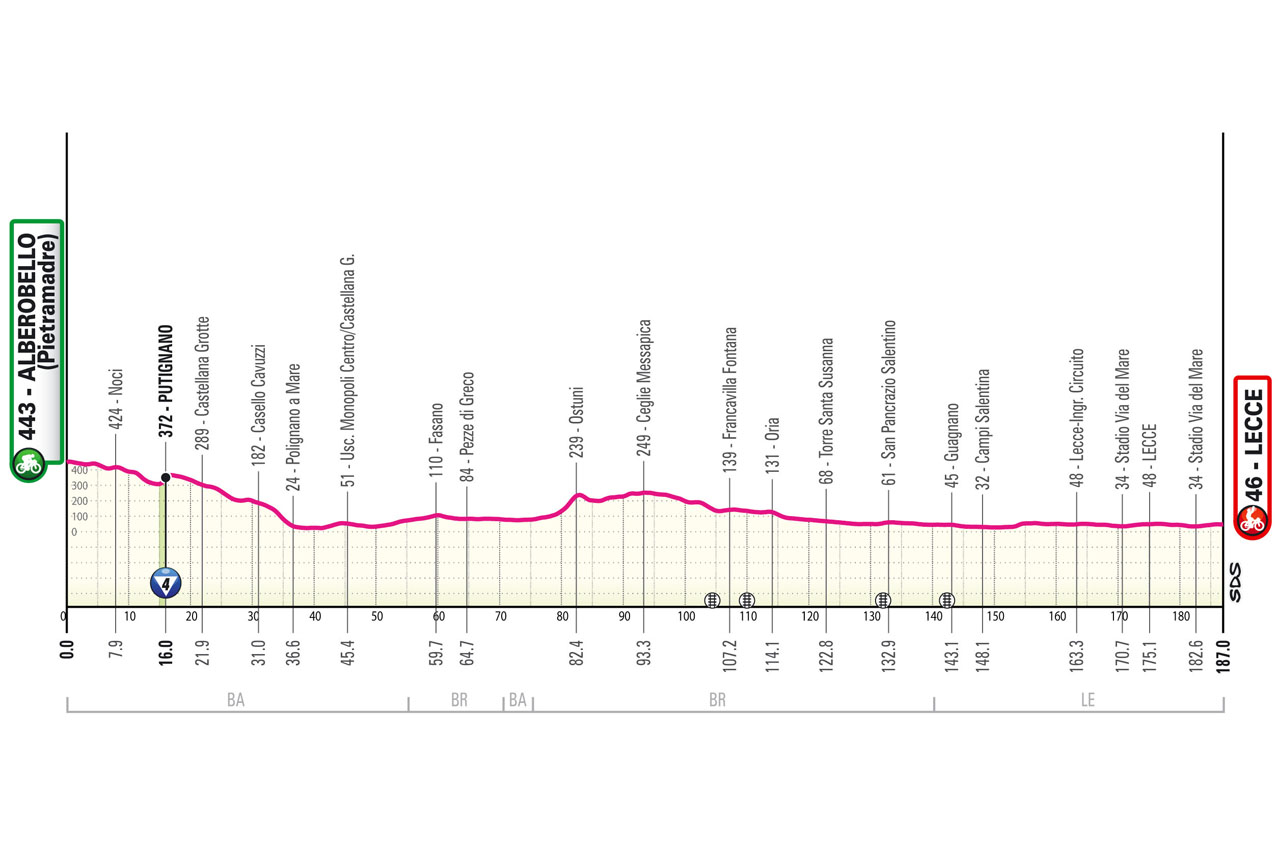
The first stage back on Italian soil – just a hop from Albania to the heel of the boot – might just be the most nailed-on sprint in the race. The first 35km are downhill and then there is barely a blip on the profile until the finish in Lecce.
Stage 5: Ceglie Messapica > Matera, 144km

This one is a largely flat day with a lumpy finish that might see the back of some of the pure sprinters, but is still likely to end in a group dash of sorts.
The climbing starts with around 30km to go on the cat-four Montescaglioso, and then it's lumpy all the way into the Unesco World Heritage city of Matera.
Stage 6: Potenza > Napoli, 210km
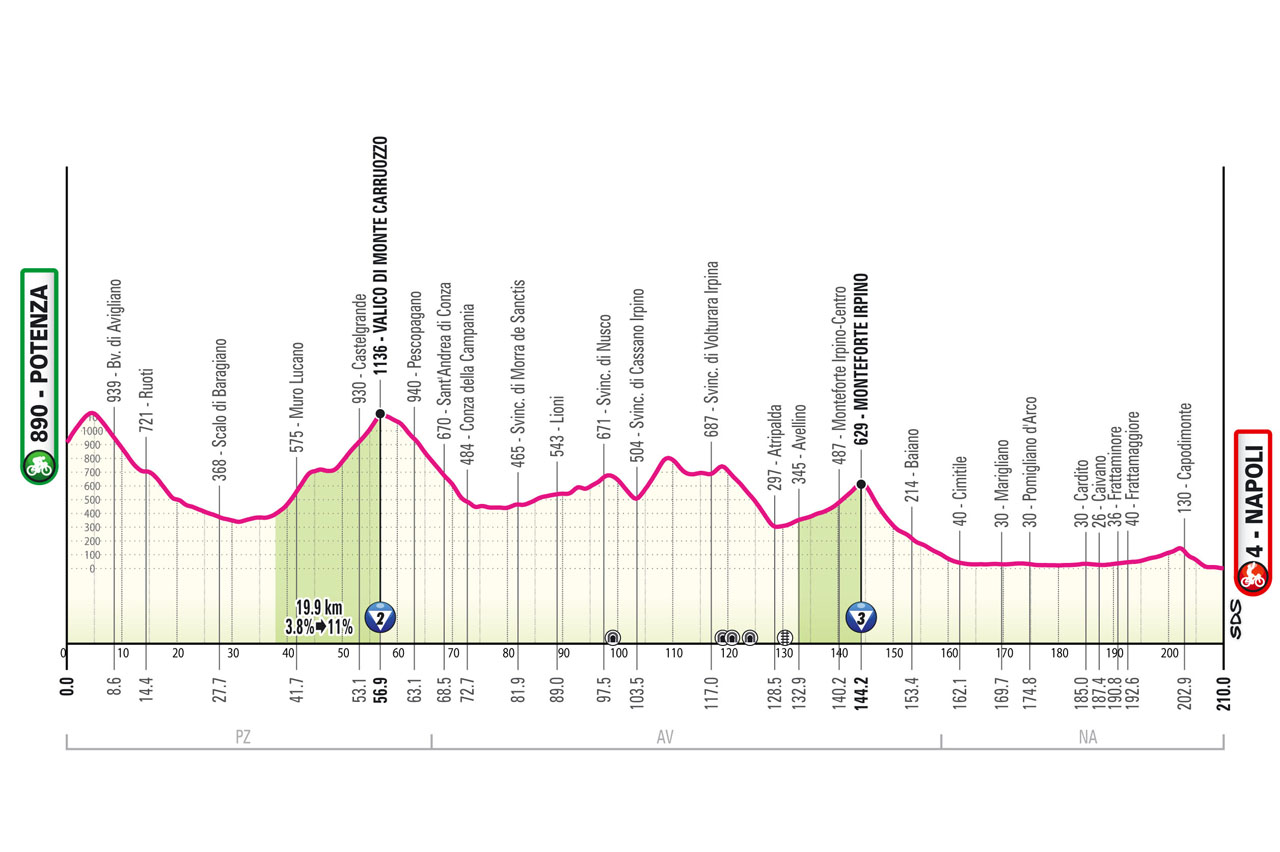
The third and last of the 'sprinters' trio' of stages features what the fast men might consider a rather unfriendly profile, with an early cat-two and a cat-three with 65km to go. However, proceedings are mostly flat after that – a bunch sprint does seem on the cards.
Stage 7: Castel di Sangro > Tagliacozzo, 168km
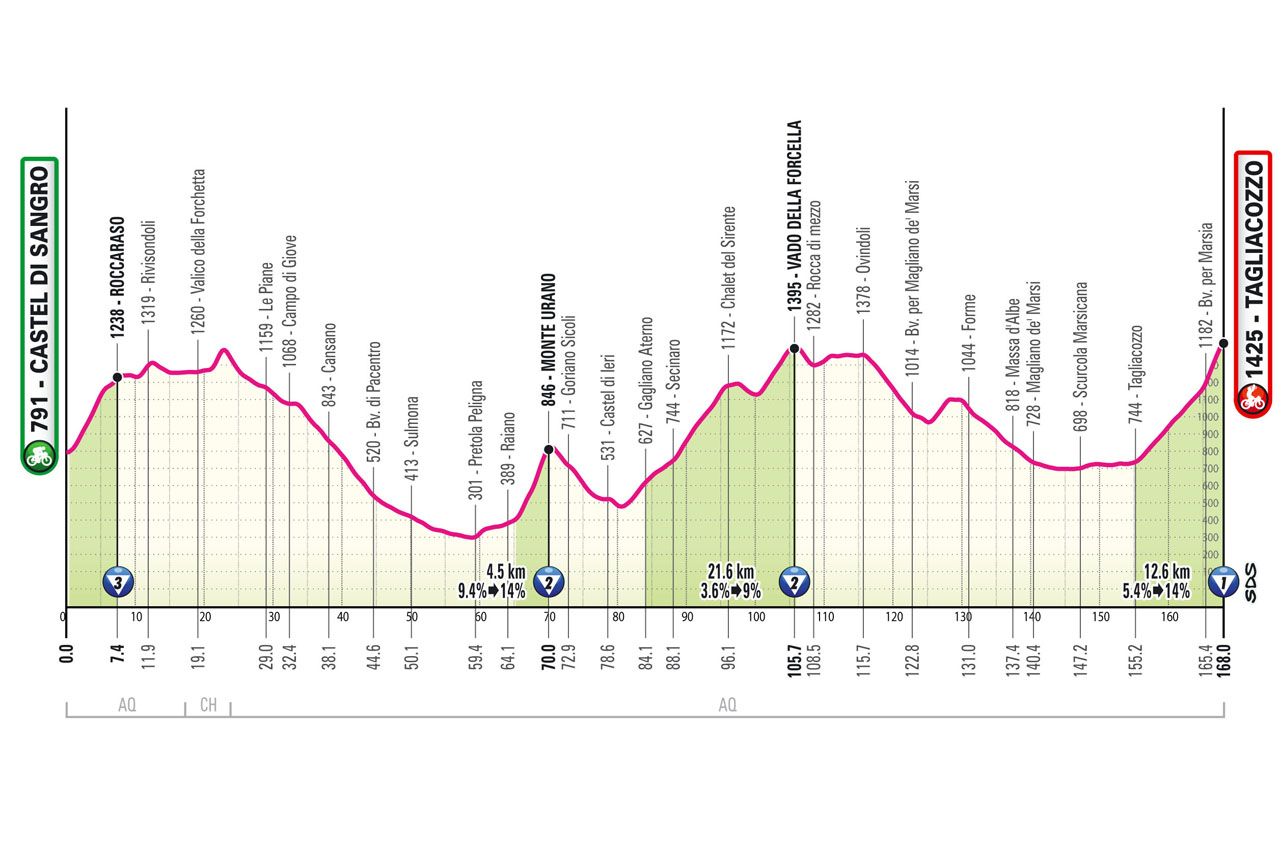
This Apennine stage is the signal for the climbers to get their skates on, with a fearsome profile featuring a cat-three, a pair of cat-two climbs in the middle, and the 12.6km, 5.4% haul to the finish. It might be a little tame for a proper GC shoot-out, but a breakaway skirmish certainly looks possible.
Stage 8: Giulianova > Castelraimondo, 197km
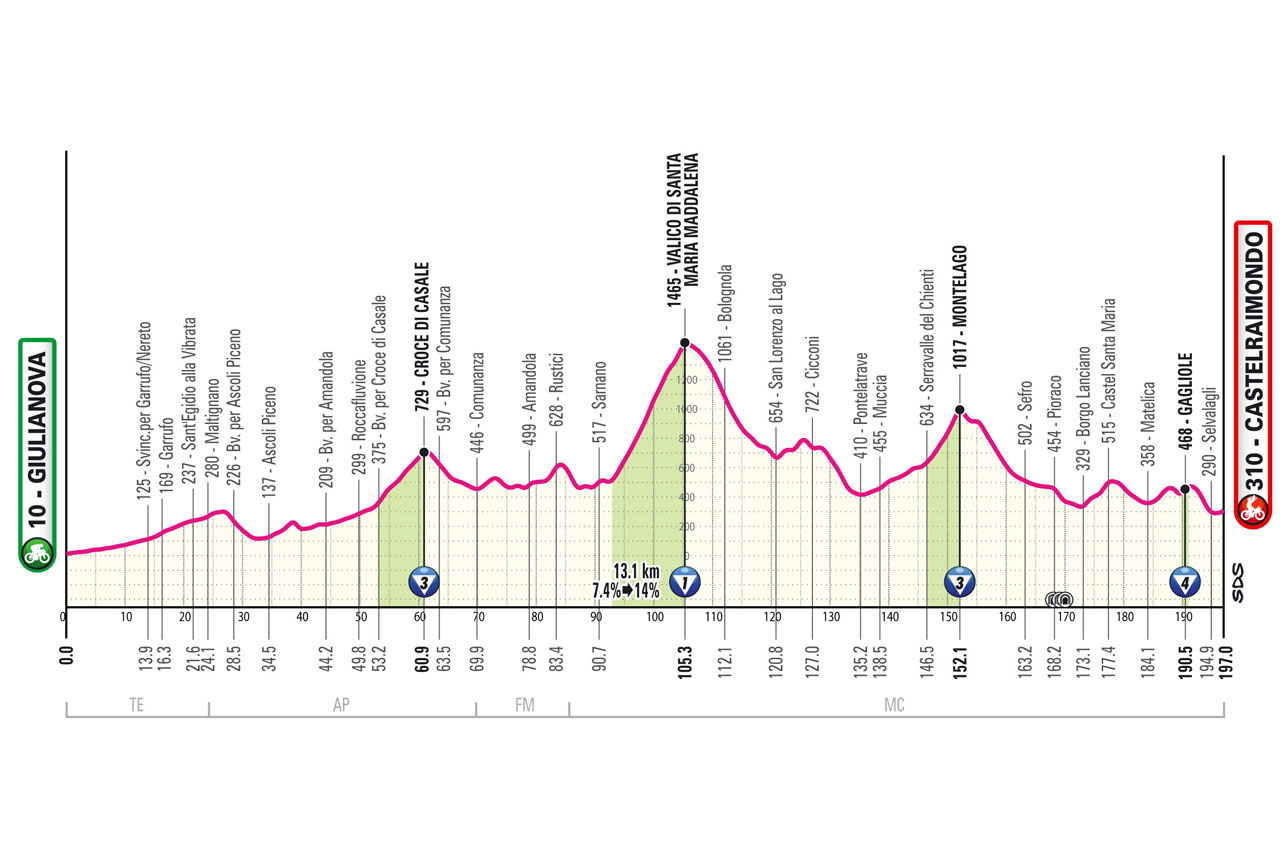
Easier than yesterday, but still tough. 'Lumpy' doesn't quite cover it, either, with its category-one climb to Valico di Santa Maria Maddelena halfway through. The second half is up and down but not excessive – perhaps another day for the escape artists.
Stage 9: Gubbio > Siena, 181km
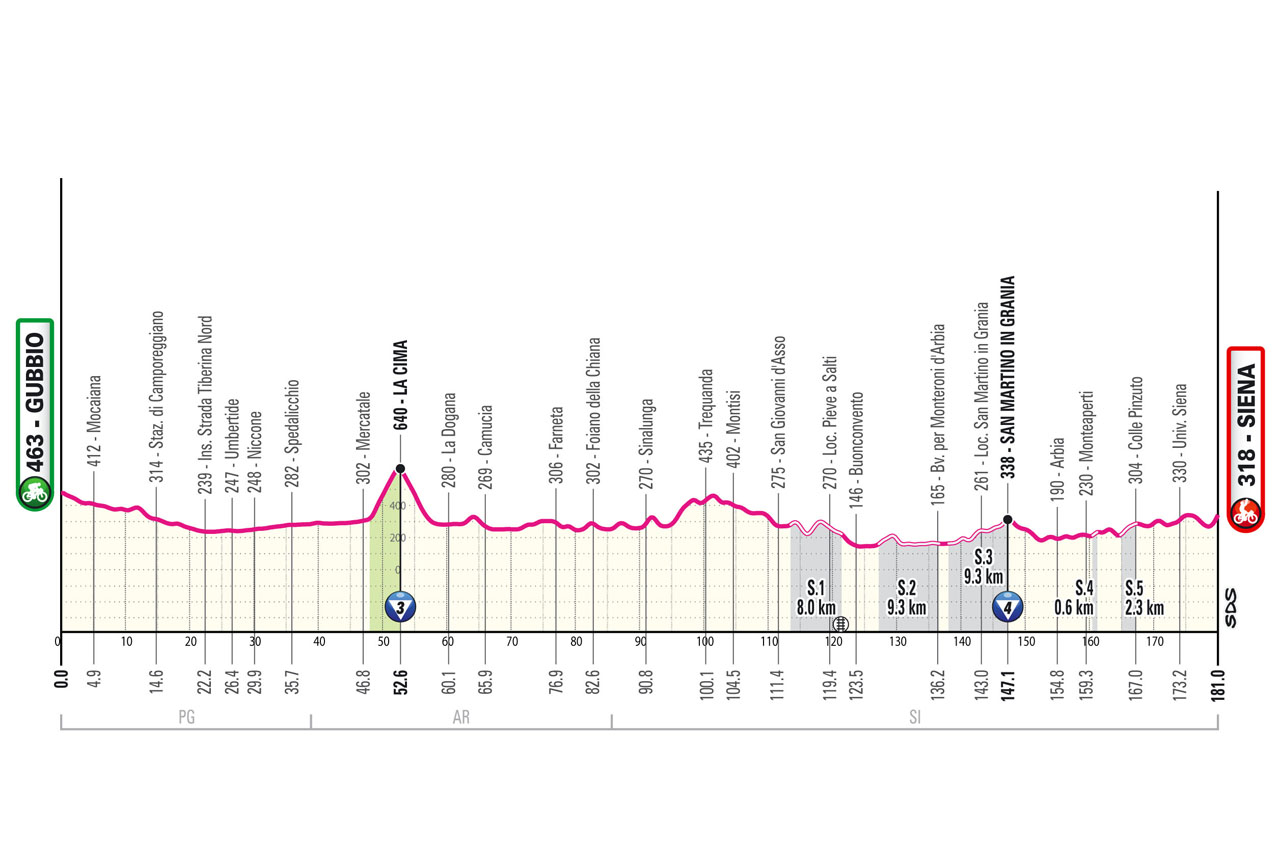
And now for something a little different. Not completely different, though, as some of it is recognisable from the early-season Strade Bianche classic. Featuring five sectors of white gravel roads and the iconic finish into Siena's Piazza del Campo, this is a stage not to be missed.
Stage 10: Lucca > Pisa, 28.6km (ITT)
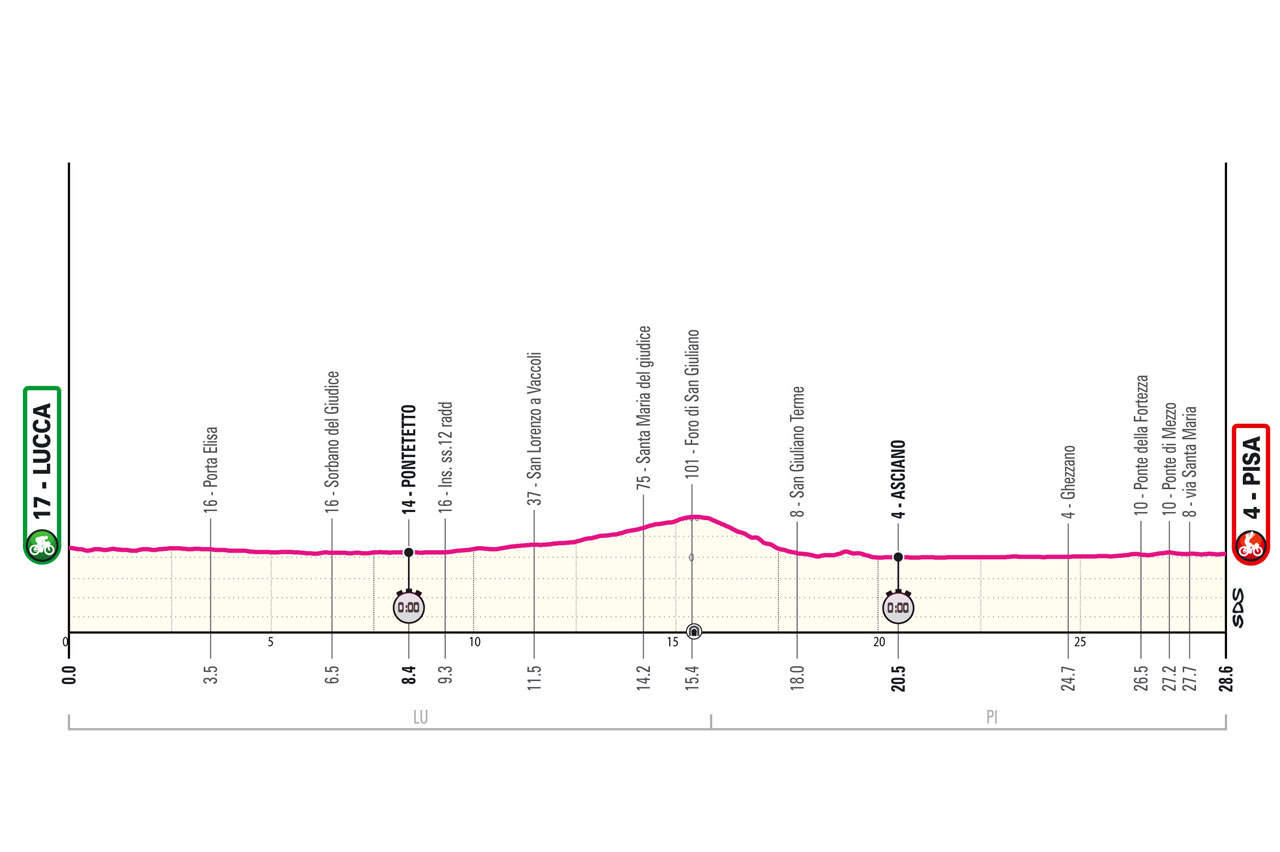
The race returns after a rest day for the second and final time trial in the race. It's not dissimilar to the one on stage two, except for the fact it's more than twice as long, which will suit some more than others. Like stage two it has a lump in the middle, but it's less pronounced. A straight-up, big-engine drag race.
Stage 11: Viareggio > Castelnovo ne'Monti, 185km
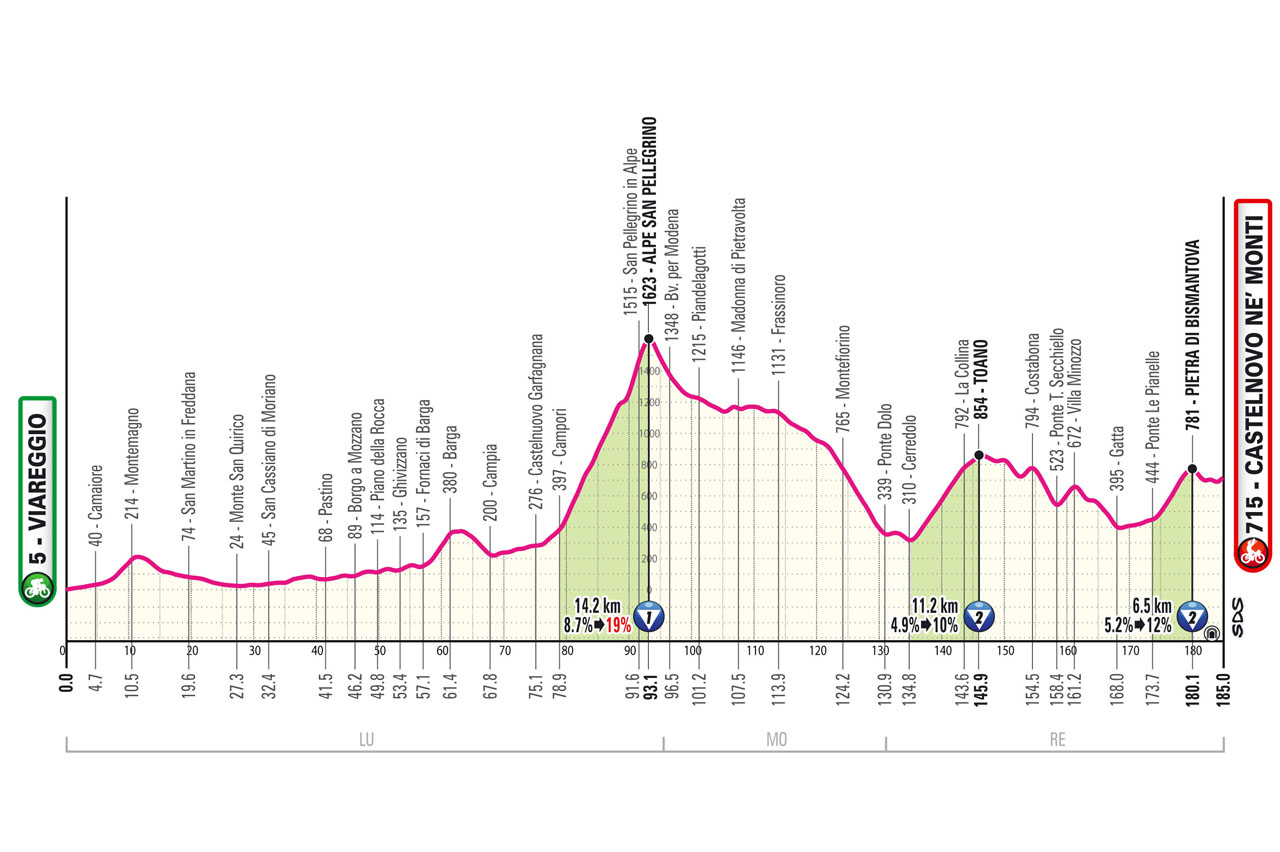
This is officially a 'hilly' rather than mountainous stage, but it does feature the properly difficult ascent of the cat-one Alpe San Pellegrino halfway through, whose 14km, 8.7% slopes are sure to see a split of sorts – and perhaps a breakaway.
Any escapees will have a tough second half of the stage ahead of them – constantly lumpy with two cat-twos, one coming just five kilometres from the finish.
Stage 12: Modena > Viadana, 172km
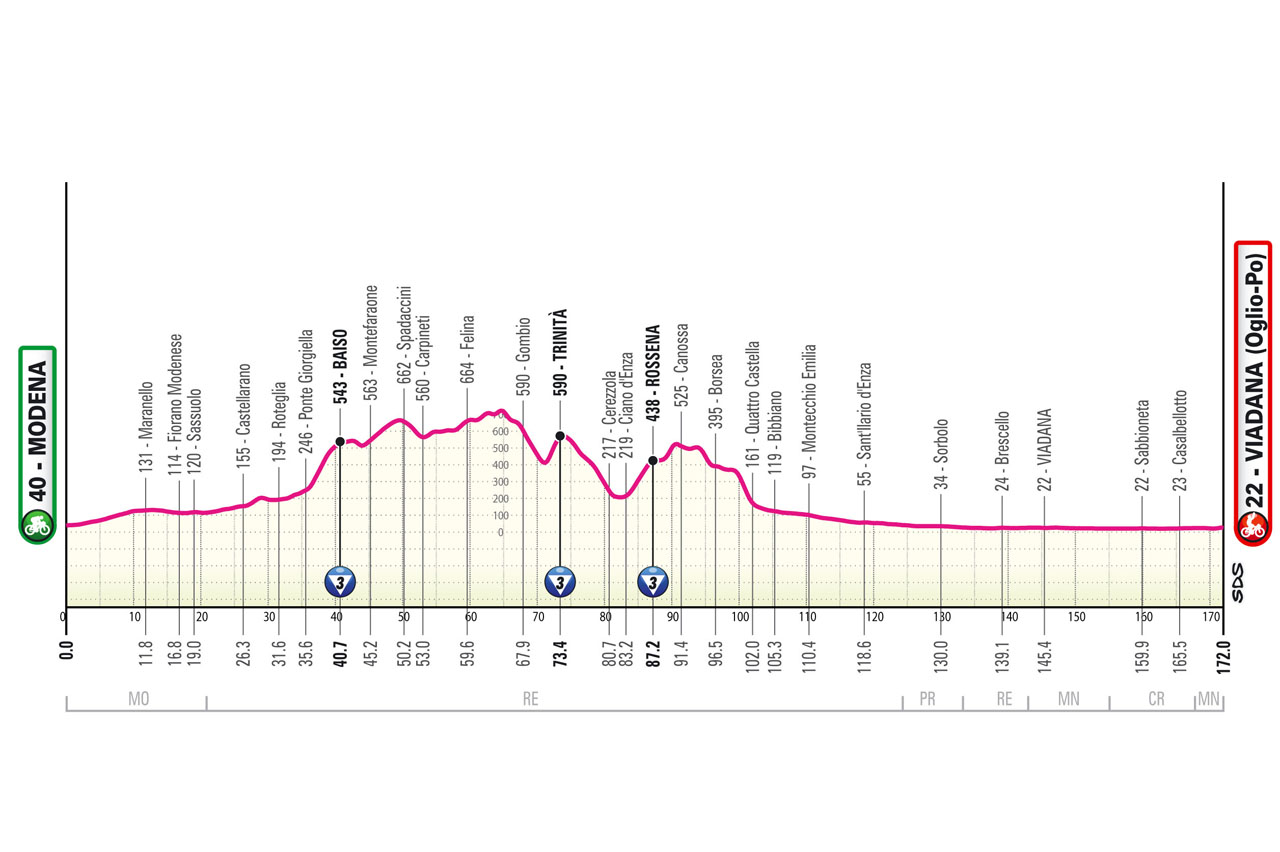
The sprinters have not had an obvious chance since stage six, and though today's outing north into Lombardy is very likely to end in a bunch dash, the sprinters will have to work for their prize thanks to a shark's-tooth mid-stage section.
Stage 13: Rovigo > Vicenza, 180km
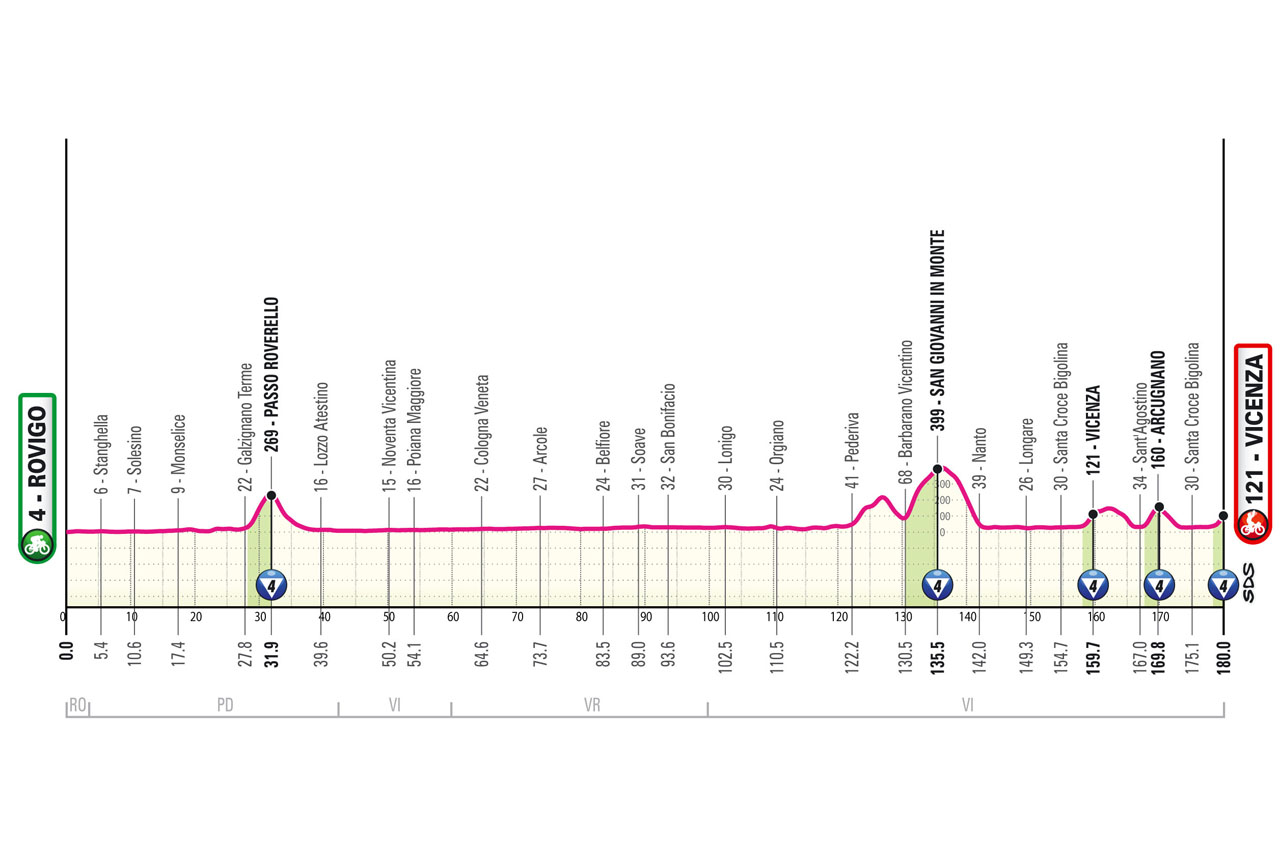
Possibly one of the tamest Grand Tour stage profiles that includes five categorised climbs that we've ever seen. Much of it is pan-flat, while all the climbs are fourth cats. However, four of those come in quick succession towards the finish, and one rises to the line.
Stage 14: Treviso > Nova Gorica / Gorizia, 186km
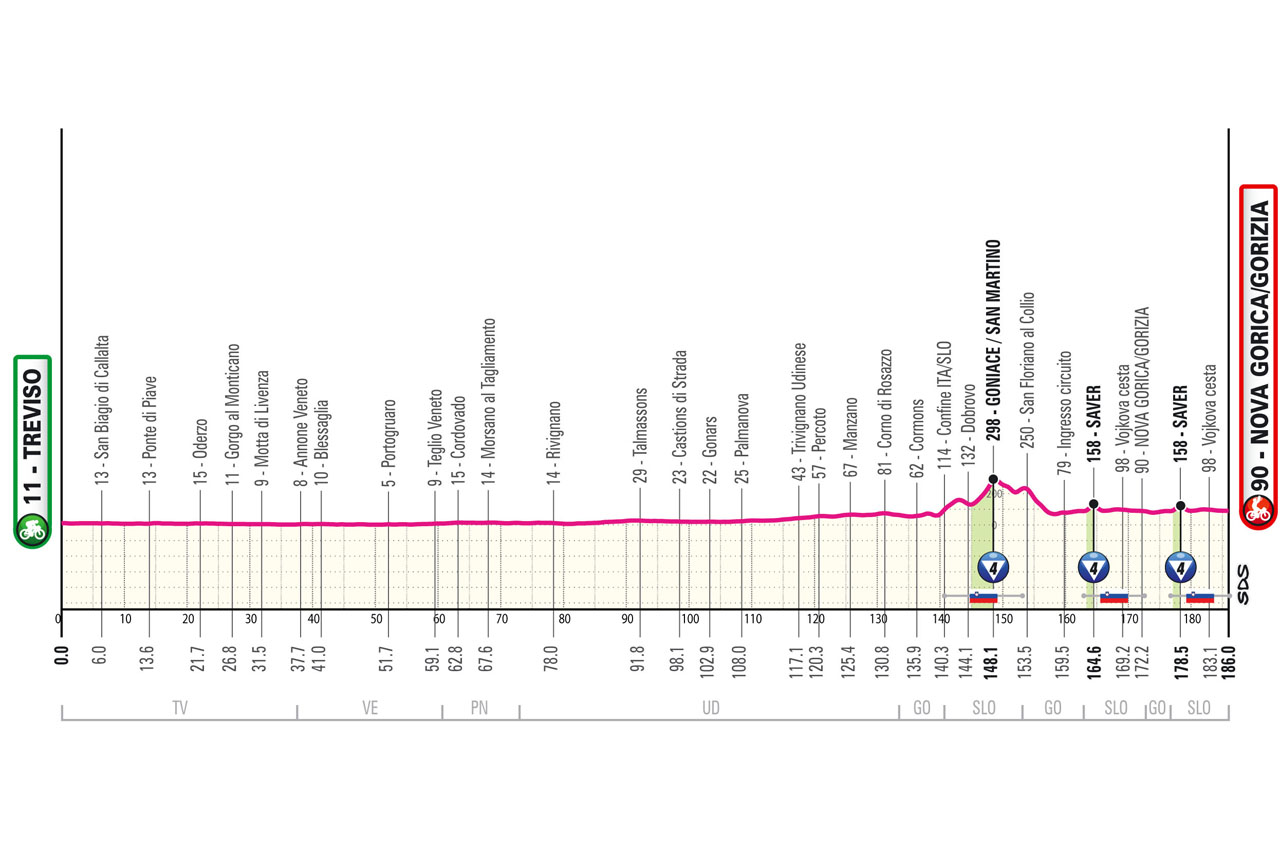
Today's stage dips a toe into neighbouring Slovenia – homeland of GC favourite Primož Roglič. Uniquely it finishes in a city that is twinned across the border of the two nations – hence its double-barrelled name. Tomorrow is a rest day, and given the week ahead, the riders are going to need it.
Stage 15: Fiume Veneto > Asiago, 214km
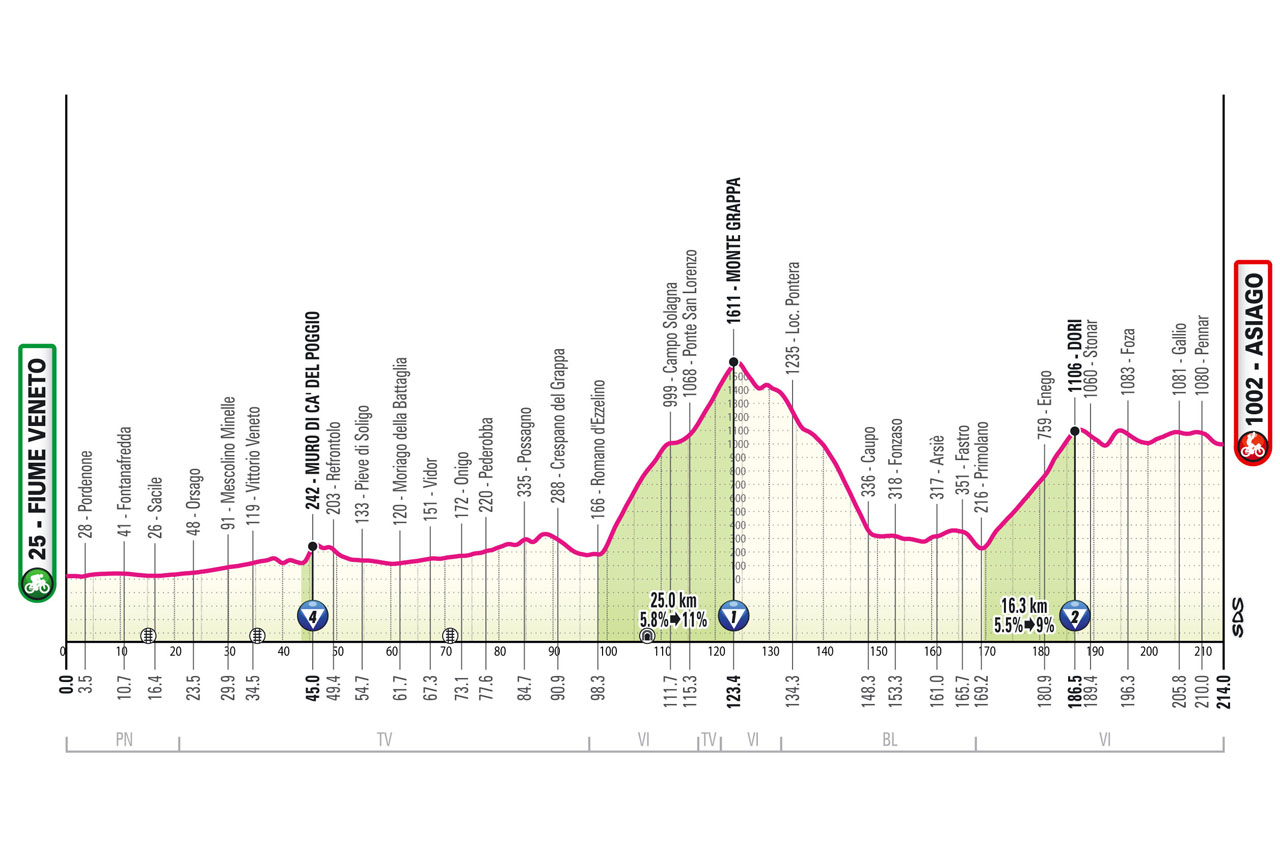
If you're having a tough day at work on this Monday, spare a thought for the Giro's riders. They're facing the first of five very hard days in the saddle to mark the final week of the race. This might be one of the 'easier' of the five, but it is still 214km long with the 25km climb of Monte Grappe in the middle.
Stage 16: Piazzola sul Brenta > San Valentino, 199km
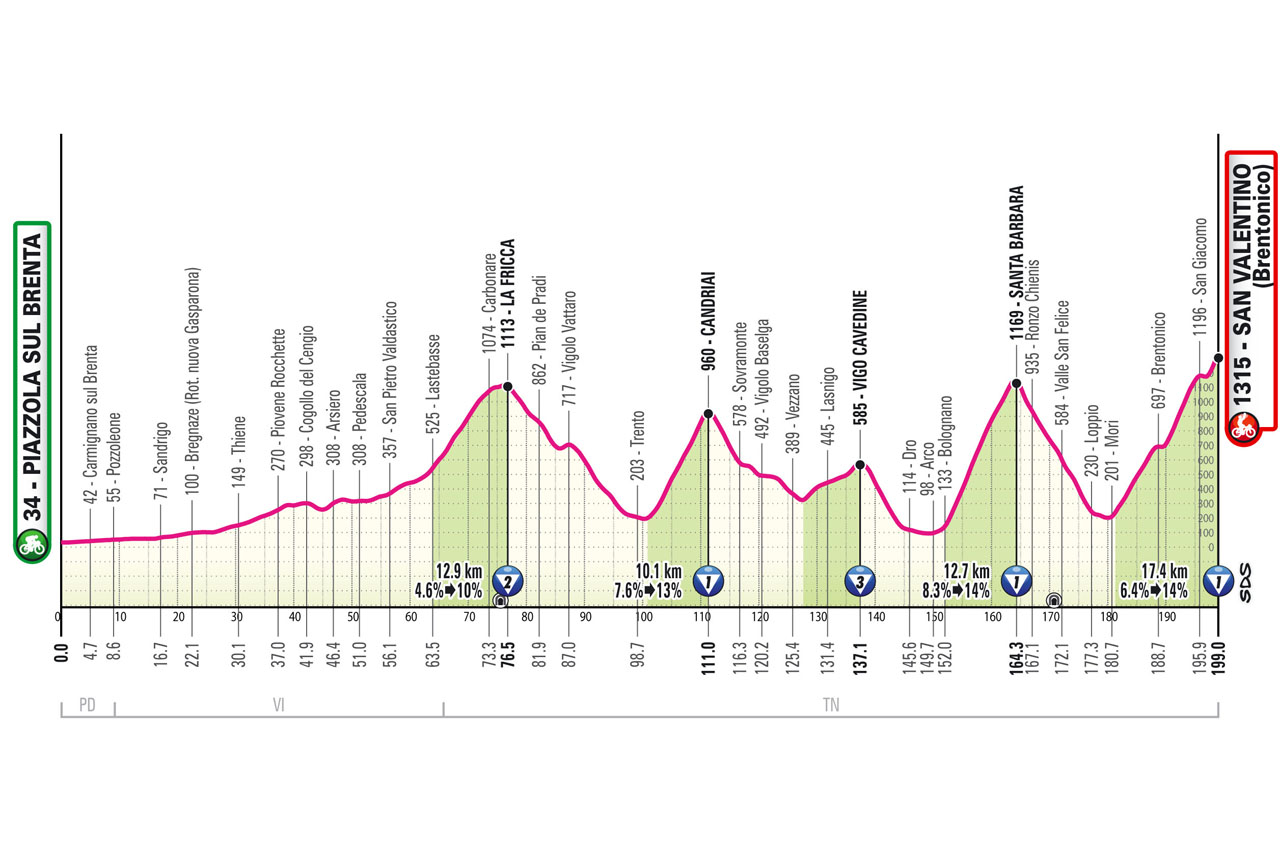
This classic shark's-tooth mountains profile features five categorised climbs, with a brace of cat-ones coming late on. First of those is the Santa Barbara (12.7km / 8.3%), which is followed in quick succession by the 17.4km, 6.4% climb to the finish.
While yesterday may have seen the riders merely watchful, the GC fight is likely to begin again here in earnest.
Stage 17: San Michele all'Adige > Bormio, 154km
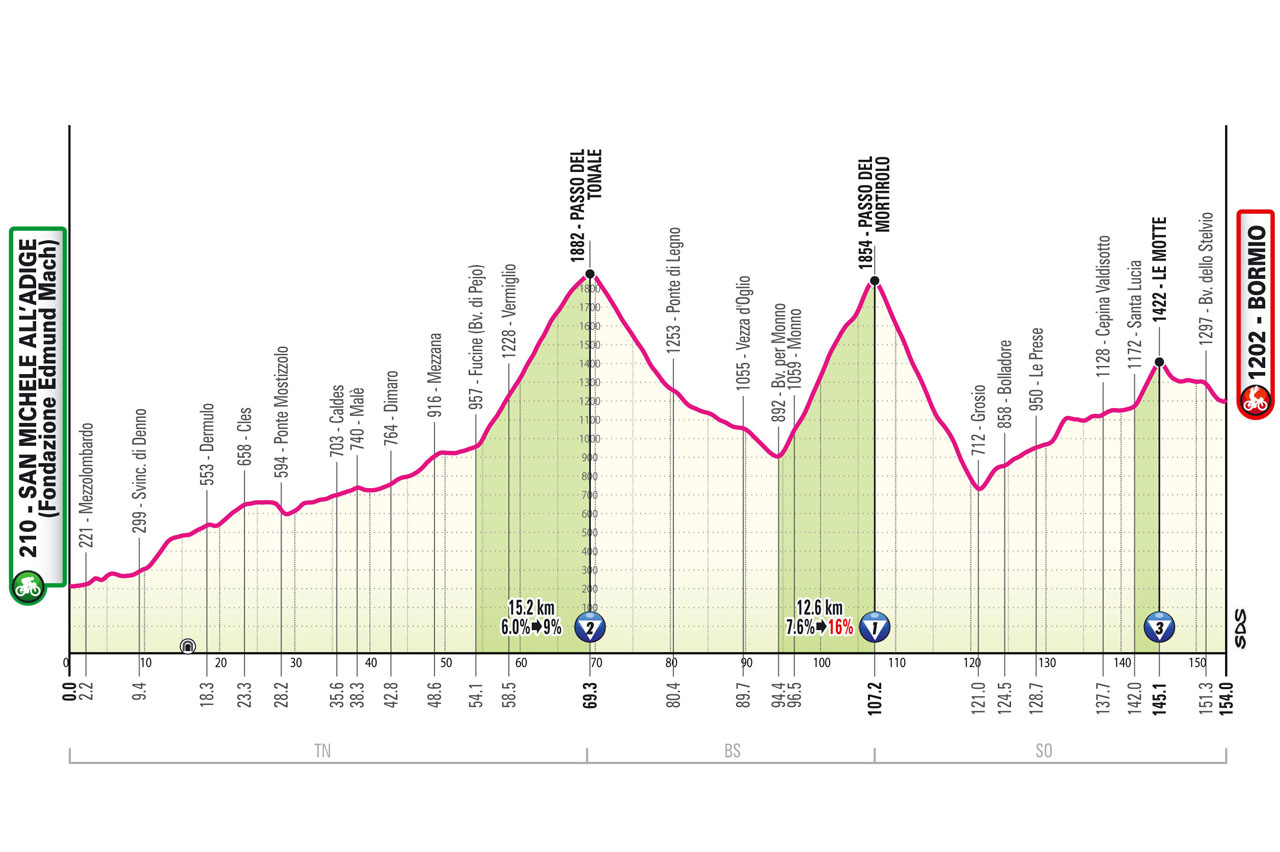
Another major climbing day sees the riders take on one of the hardest and most iconic climbs of the Giro d'Italia – the Mortirolo.
A battle is likely to erupt on its slopes, but this may not be for the GC unless someone senses blood, as there are still 50km to go to the finish which are lumpy but feature just one third-cat climb.
Stage 18: Morbegno > Cesano Maderno, 144km
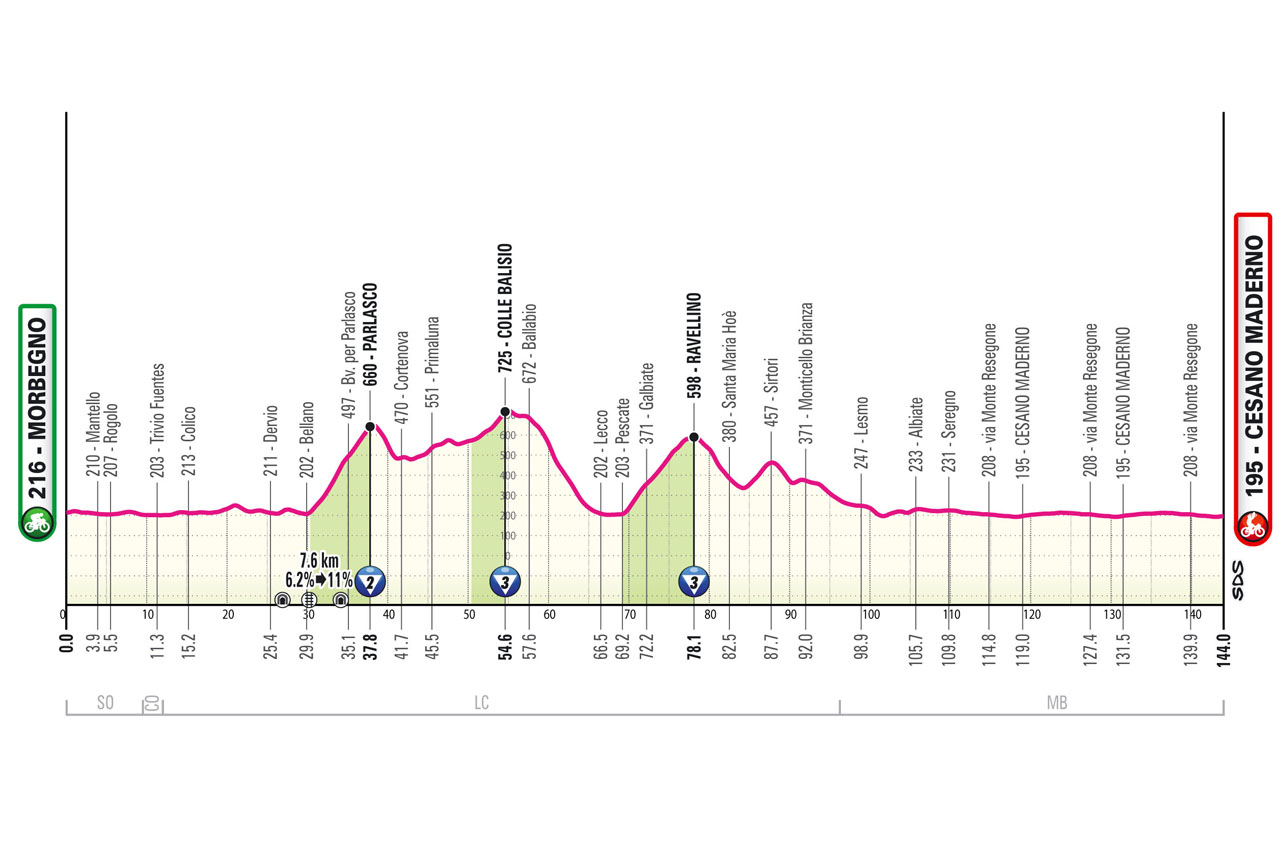
Today brings relief for the GC riders and sprinters alike, with the former able to down arms for a moment while the latter are let loose in the terrain that they came here for.
It will likely come as no surprise to find a trio of classified climbs halfway through, but the last 50km are downhill or flat.
Stage 19: Biella > Champoluc, 166km

If anyone with designs on the overall win in Rome was biding their time, today is where the wait has to end. The first of a pair of super-hard, 5,000m climbing days in the mountains of north-western Italy.
It isn't quite a summit finish, but riders will still need to knock down the cat-one triple of the Col Tzecore (16km, 7.7%), the Col Saint-Pantaléon (16.5km, 7.2%) and the Col de Joux (15km, 6.9%). Last off is the smaller cat-two rise to Antagno and a five-kilometre downhill to the finish.
Stage 20: Verrès > Sestriere, 203km
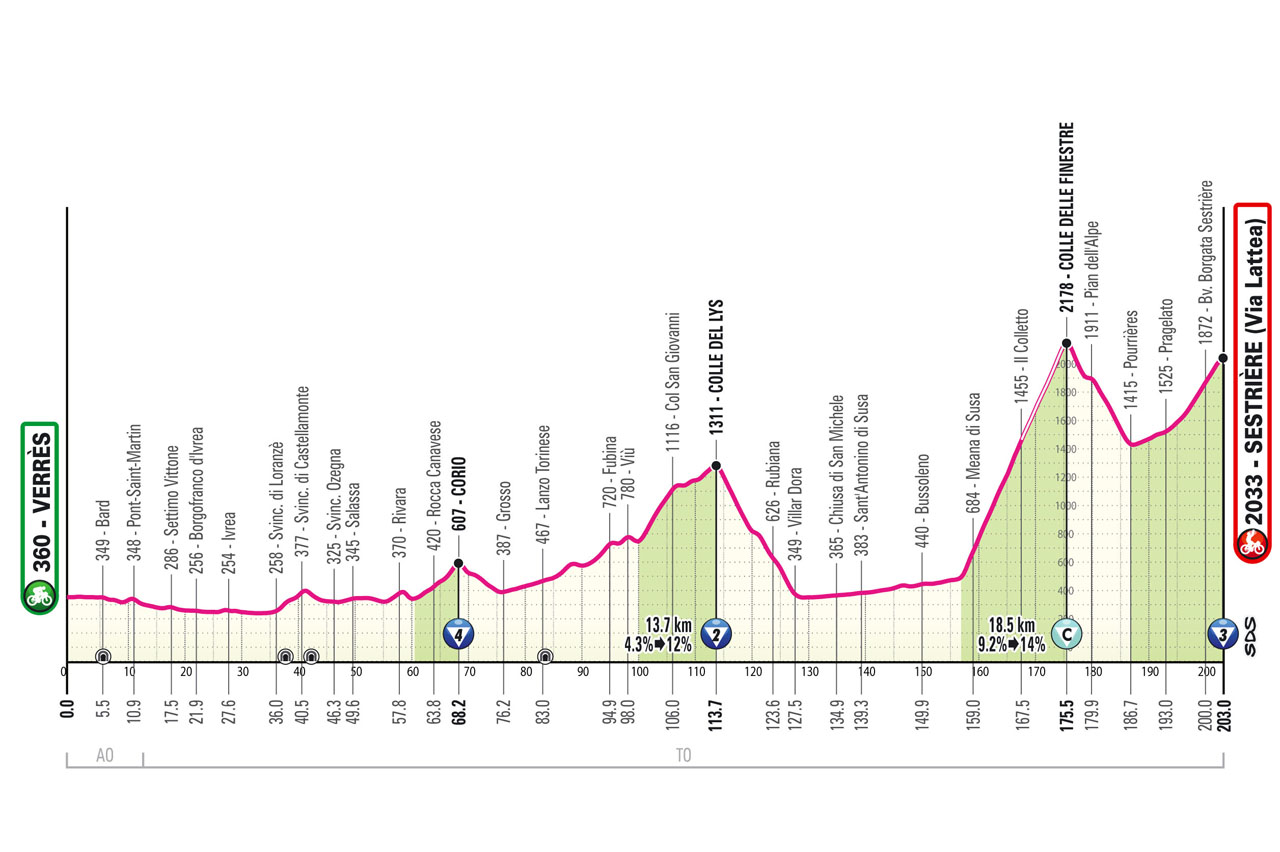
By the end of this stage, we will know the name of the Giro d'Italia winner, 2025. Much of the day is relatively innocuous compared to the fearsome profiles of earlier in the week, with just a cat-four and cat-two in the first 159km.
Then the race ignites, though, as it hits the Colle delle Finestre. This 2,178m behemoth is where Chris Froome attacked in the 2018 race to win his last Grand Tour, and marks the highest point of this year's race.
From the top of the Finestre there is just 28km, including a cat-three ascent to Sestriere, to conclude the GC battle of this year's race.
Stage 21: Rome > Rome, 141km
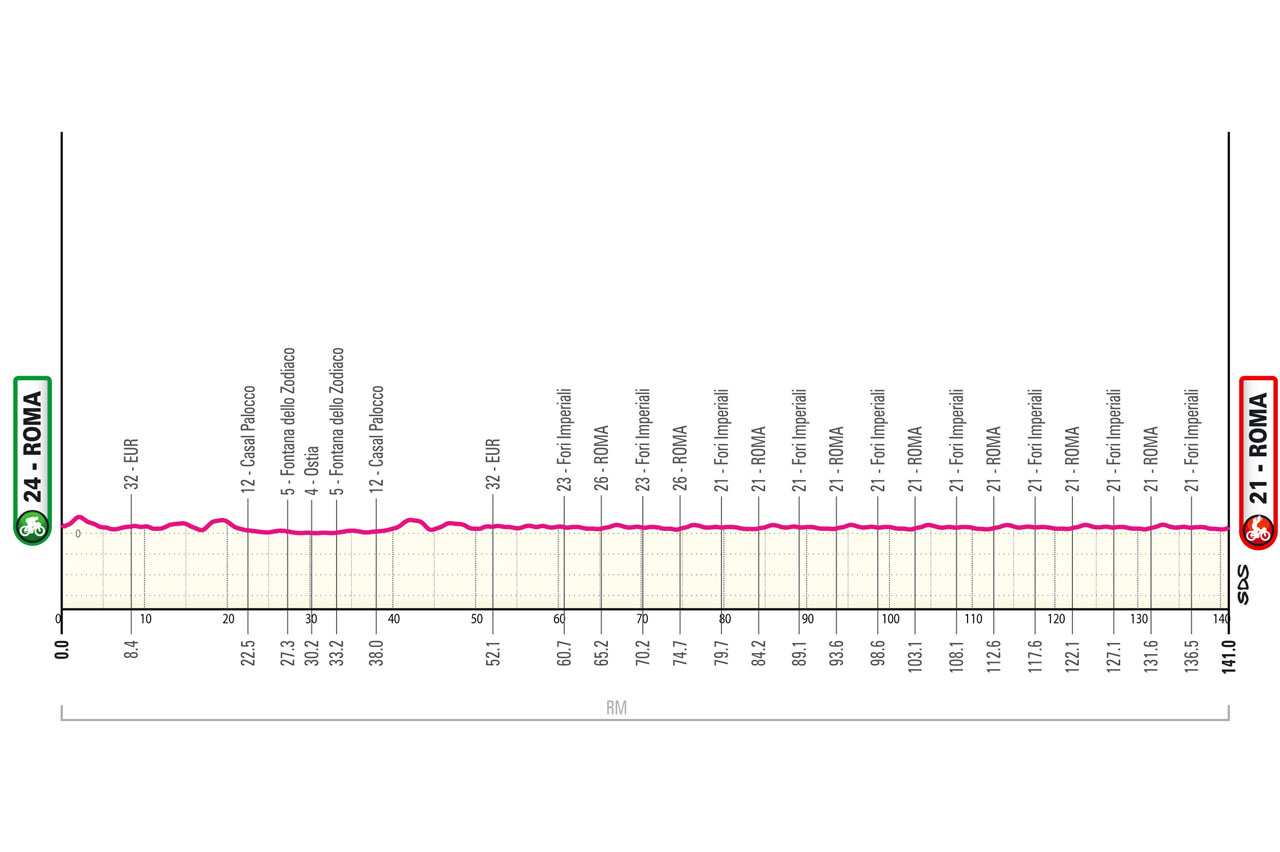
After the biggest transfer of the race comes the traditional Rome-based finish, featuring seven circuits of the city and a final foray for the sprinters who have made it through the final week.







